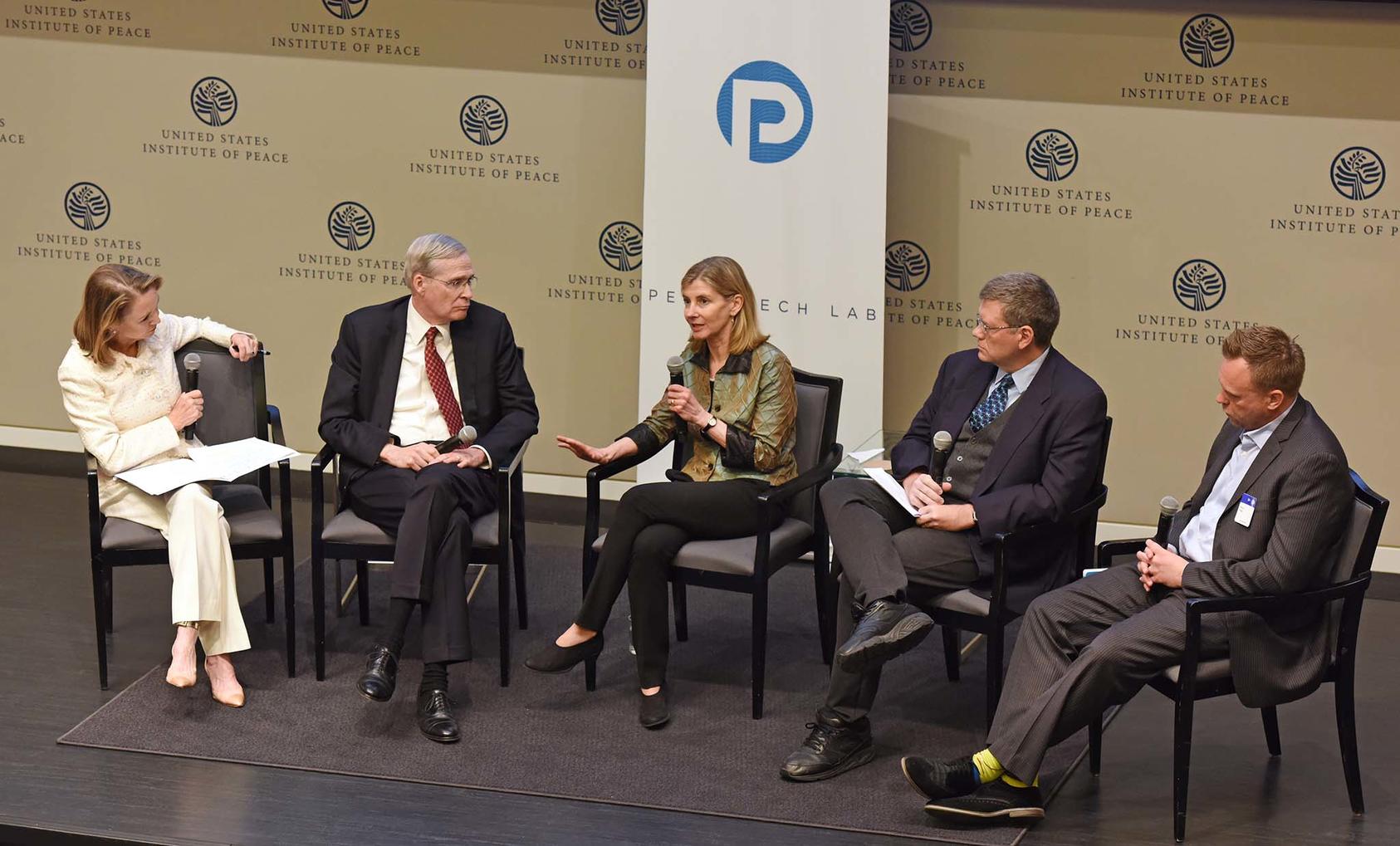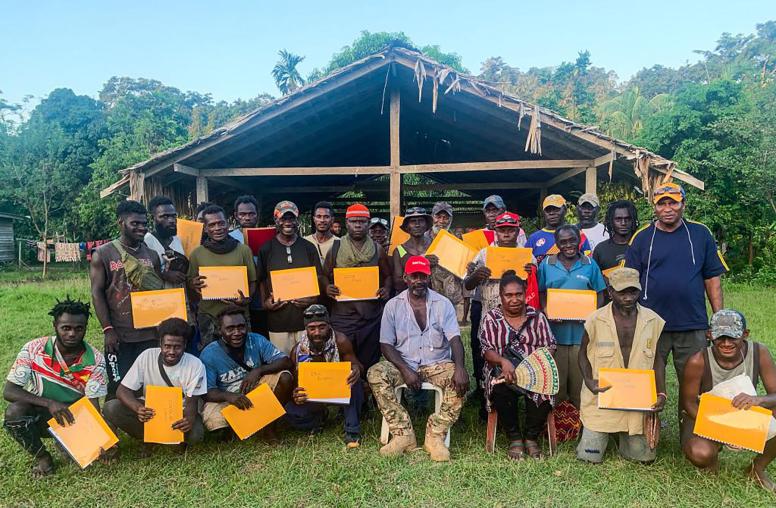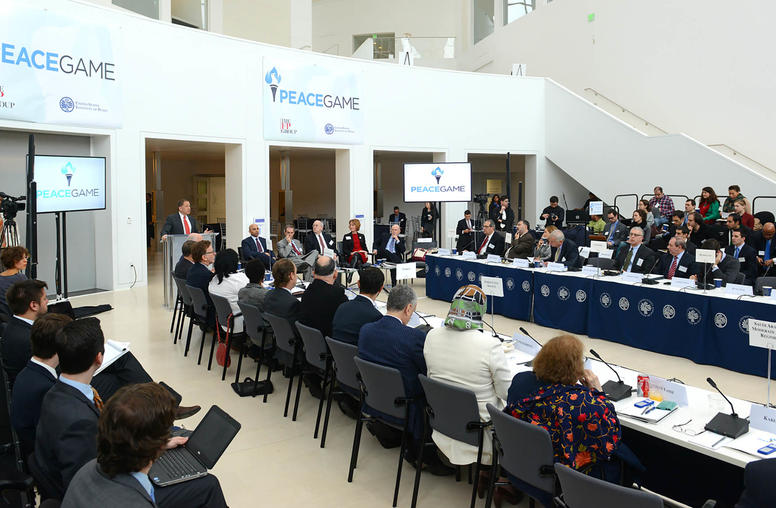How 'Peace Tech' is Changing Global Conflict
Innovations Alter Ways That Citizens and States Make War--and Peace
As technological innovation develops at a blistering pace, it has fundamentally altered how conflicts develop and play out, and how peacebuilders prevent and mitigate violence. Throughout history, technology has driven warfare and international security. To take one example, the development of nuclear weapons led to the doctrine of mutually assured destruction as the prevailing norm of the Cold War era. For centuries, however, most of this technology was only available to states. Today, individuals are empowered by technology to have a voice in international affairs and instantly connect with people on issues of convergence, according to USIP and technology experts speaking at PeaceTech Lab’s annual summit on May 8.

Building Peace through Connection
Rapid innovation, particularly in information and communications technology, has democratized the role of non-state actors in conflict and peacebuilding. “When I was in the government, we thought of everything as top-down—What were governments going to do to affect things on the ground?—and we did not pay attention to what’s happening from the bottom up, on how organizations and individuals empowered by technology” can help reduce conflict, said former U.S. national security advisor Steven Hadley. “This bottom-up activity is heavily facilitated by today’s technologies,” said Hadley, who is now the USIP Board chairman.
Information and communications technology, from Facebook to WhatsApp, helps people connect across borders and understand new perspectives, providing powerful tools for peacebuilders. “The fundamentals of peacebuilding are dialogue, facilitation, and mediation—enabling people to use their words to solve differences before they become violent,” said USIP President Nancy Lindborg.
Online activists in India and Pakistan, for example, have started social media initiatives that bring people together to understand each others’ perspectives on the conflict between the two nations. “If you’re going to avoid conflict or resolve it … you need to deal with underlying tensions that provide a grievance ground that results in conflict. Today’s technology provides the tools with which to do that,” said Hadley.
The conference was sponsored by Peace Tech Lab, a non-profit organization that promotes technology use to help reduce violent conflict worldwide. The lab is based at USIP.
An example of the new connections discussed by speakers was a virtual reality portal built by a New York-based group, Shared Studios. The portal let attendees virtually transport themselves to Germany, Afghanistan, Iraq or Mexico to interact with young peacebuilders. The USIP Academy has used technology to provide online courses for international affairs practitioners, helping peacebuilders worldwide transform violent conflicts in their communities into nonviolent ones.
I just made new friends in the #PeaceTechPortal at @USIP with @PeaceTechLab and @SharedStudios. This was technologically the best virtual exchange experience I've ever had. #PeaceTech pic.twitter.com/DbcbA3zlji
— Zach Tilton (@zachtilton) May 8, 2018
A Double-Edged Sword
For those addressing conflict and building peace, there is much to be optimistic about, as technology provides tools and platforms with the ability to instantly reach people across the globe. Looking to the early days of the Arab uprisings in 2011, many saw the spread of social media as a force for democratization that people could use against authoritarian governments.
Innovation, however, is not a panacea. Examples of states and individuals stoking conflict through technology abound: Look no further than the Islamic State’s successful deployment of social media as a recruitment tool. “Technology has accelerated development gains that were unimaginable a decade ago and at the same time created a different kind of grievance that in the peacebuilding field you need to be cognizant of,” said Lindborg.
Authoritarian governments, aware of the power of technology, have responded with harsh measures to control its use. The Chinese government has imposed draconian restrictions on what its citizens can do online. Just a few days ago, Iran’s judiciary banned Telegram, a popular messaging app that Iranians use to communicate securely. Outside of government, social media platforms have been used from the United States to Kenya to spread hate speech and fake news. While technology has driven enormous progress, its emergence has had decidedly mixed results.
States and Silicon Valley
Technology is often discussed in terms of its disruptive effect in fields from commerce to healthcare to education—and it’s now disrupting governments and international affairs. The speed of innovation has left governments struggling to keep up. “People really care what businesses are doing more and more. They care because governments are stepping back or not playing as much of an active role and we really see a gap there, from a software perspective, where we can help make a difference,” said Brian Paget, a solutions strategist at the software firm SAP.
Today’s tech innovators are sidestepping governments and creating their own institutions, such as cryptocurrencies. “Nation-states are not leading interactions between citizens on the global stage,” said Colin Rule, a Silicon Valley executive. Rather, citizens “are doing it themselves and self-organizing,” said Rule, who is a PeaceTech Lab board member.
What role can states play as technology seemingly diminishes their dominance in everything from conflict to economics? According to Rule, cynicism over governments’ ability to adapt to technology pervades Silicon Valley, leading the industry to take its own approach on technology and conflict.
“Moving governments aside is not a value-free proposition,” said Lindborg. “But there needs to be a faster pace on creating values and normative institutions, not just a market or incentive approach,” to regulating technology and its use.
In Silicon Valley, the tech industry increasingly understands that it has some responsibility for how its technologies are employed. “Technologies that Silicon Valley has created are being exploited by people that benefit from conflict and repression, said Rule. “Just like the solution to hate speech is more speech, the solution to this is more tech that promotes cooperation, conflict resolution, understanding and freedom,” he added.
Ultimately, addressing conflict and building sustainable peace requires a multilayered approach that includes states, citizens and Silicon Valley. With today’s technologies citizens play a more vital role than ever. “Peace is a problem that you need to solve from the bottom up, the top down and the inside out. Everyone has to play in this,” said Hadley.



